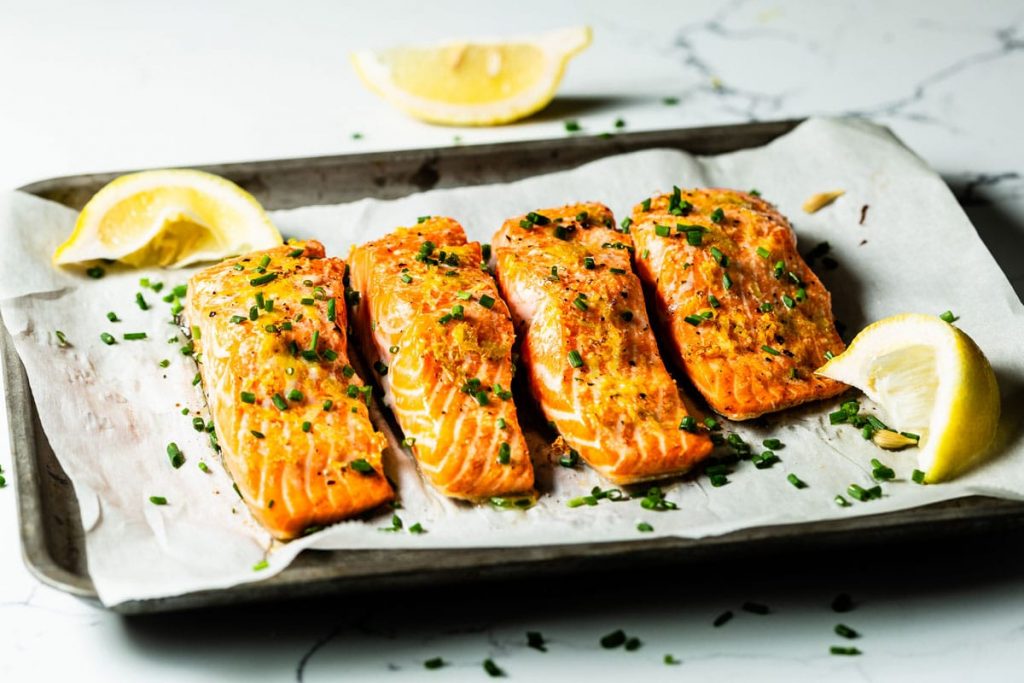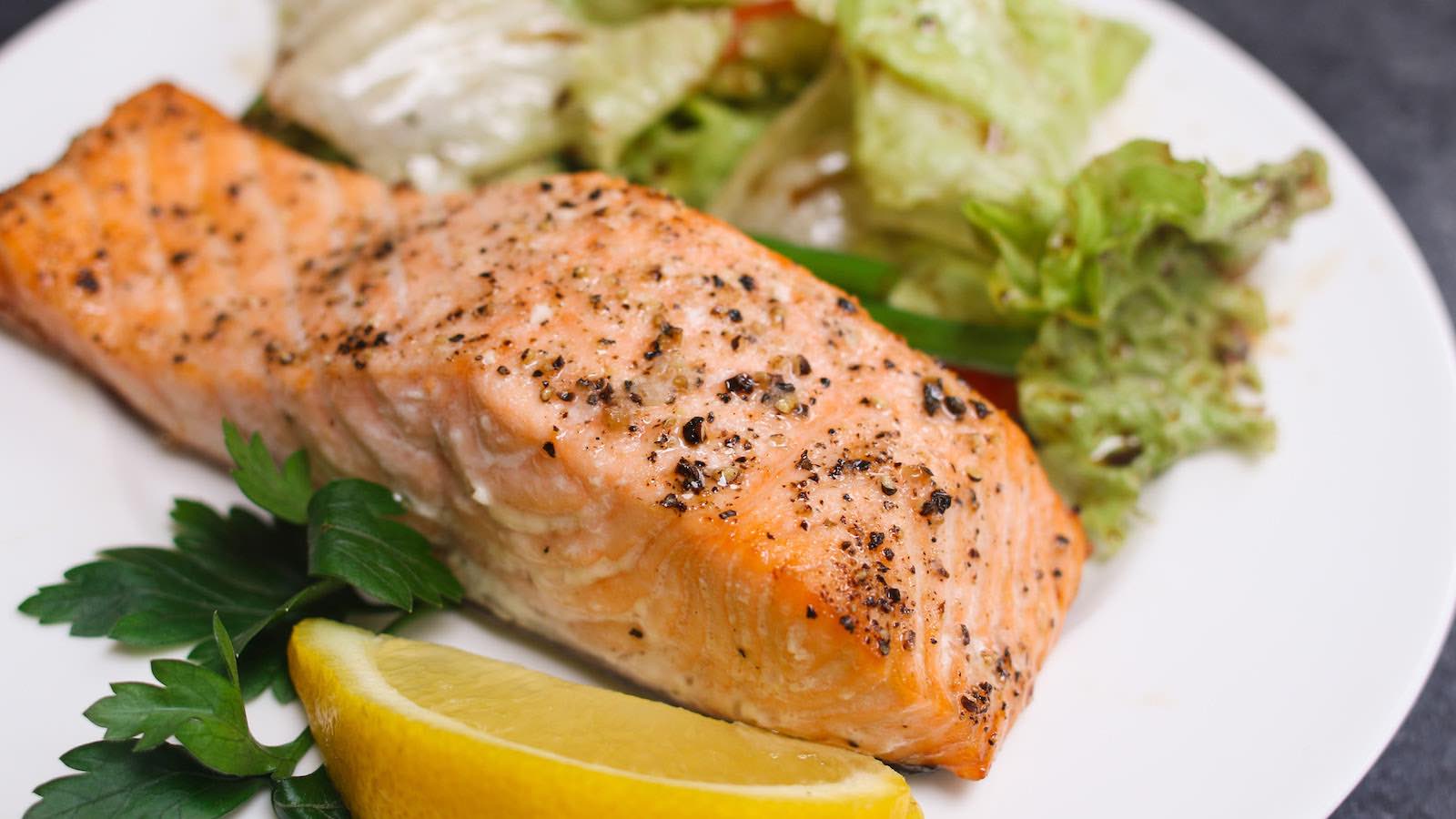Preparing perfectly cooked salmon requires finding the optimal combination of ingredients, cooking time and oven temperature – leading to an irresistibly tasty yet healthy dish!
Step one is selecting your chosen salmon variety (wild or farmed). Next, season and bake.
Cooking Time
Cooking salmon at 400F depends on several variables, including thickness of the fish and preparation method. On average, it takes 15-20 minutes per pound at this temperature – however it is essential that it be regularly checked as overcooking may occur – some recipes suggest using a meat thermometer as an assurance that all portions have been thoroughly cooked through.
One other element that affects baking time is the type of salmon used. There are two major types of salmon available – wild and farmed. Of the two varieties, wild is often more expensive but has greater nutritional value and contains lower levels of fat and cholesterol than its farmed counterpart.
When baking salmon, it is crucial to use light seasonings that won’t dry the fish out and add extra flavor. Furthermore, prior to starting, be sure to rinse the fish well to rid itself of dirt or debris and allow the seasonings to penetrate more deeply into its flesh.
Salmon can be prepared in many different ways, from roasting and pan frying to grilling and eating it with its skin on. Some prefer leaving theirs intact while others remove it – for those planning on eating the skin, sushi-grade salmon has been treated against bacteria in order to ensure safe consumption of the entire product.
When cooking salmon, it is essential to select an appropriate sauce. There are many to choose from including teriyaki, honey mustard, chipotle cream and chili lime sauce; each has their own distinct taste so be sure to experiment and find what best fits you!
Prior to baking salmon, it is crucial that the oven be preheated properly so as to ensure even and consistent heating for maximum tenderness. Covering it in foil while it cooks will also keep moisture inside for optimal results and protection from overcooking. Once completed, allow it to rest for at least 3-5 minutes after its finish before cutting or serving for best results!
Temperature
Temperature plays an integral part in how long it takes to bake salmon. A higher temperature will result in faster-cooking salmon while lower temperatures require longer. An easy and straightforward way to determine the ideal cooking temperature for your salmon is using an instant-read thermometer; it will ensure its complete and thorough cooking while simultaneously helping prevent overcooking.
Salmon should be baked properly to produce opaque flesh that flakes easily with a fork, with mild flavor and moisture levels that suit you best. Overcooking can result in dry and unappetizing fish; thus it is crucial that an instant-read thermometer be used so you can remove the salmon as soon as it reaches your desired level of doneness.
Your choice of salmon will also have a substantial effect on its preparation time, such as choosing between chinook salmon, coho salmon, or sockeye salmon (which has milder flavors) or soweye (smaller) varieties. Chinook is typically preferred due to its firm texture. Coho salmon tends to be smaller with lighter flavors while sockeye fish is similar but offers milder flavors than either option.
No matter the variety of salmon you are cooking, it is crucial to use high-grade oil in preparing it for baking. This will prevent it from sticking to the pan and drying out during its journey through the oven. Also essential is seasoning it well with salt and pepper to bring out its natural flavors.
Many people prefer marinating their salmon before baking it. Doing this adds flavor and moisture, helping prevent it from drying out while it bakes. Popular marinades for salmon include lemon butter, honey mustard and pesto; you may wish to experiment with different marinades until you find what suits you best!

Seasoning
Salmon is a delicious fish with low calories, plenty of nutrients, and numerous health benefits. Plus it can be prepared in many different ways; one popular method involves baking it in an oven; this yields tender yet flavorful salmon that’s easy to digest for all age groups!
Cooking time for salmon will depend on its size and thickness; typically 10-14 minutes per inch will do. To make sure it’s done to perfection, it is advised to use a meat thermometer for accurate results.
If you are using pre-packaged salmon, read the label carefully in order to ascertain an exact cooking time. Different brands may recommend different baking times; additionally, your type of oven could also affect this. It is crucial that an accurate meat thermometer be used and temperatures monitored carefully in order to prevent overcooking or undercooking of your meal.
As when baking salmon with or without foil, seasoning it properly is key for optimal results. A combination of salt and pepper will go far toward elevating its flavor; lemon juice, garlic powder or herbs may add additional depth.
Once your salmon has been properly seasoned, there are various cooking methods you can employ for its preparation: oven baking, grilling, roasting or pan-frying are among your options. For optimal results it would be wise to utilize an oven with digital display so as to monitor its temperature and prevent overcooking.
Salmon makes for an excellent lunch or dinner choice because of its omega-3 fatty acid content, which has been found to improve skin condition. Plus, salmon provides protein and vitamin B6, making it perfect for adding variety into dishes like sandwiches and salads!
Foil
Baking salmon in foil is an easy and delicious way to ensure perfectly flaky and flavorful fish fillets every time! Simply preheat your oven to 400 degrees, line a baking sheet with aluminum foil, season fillets with salt and pepper before placing them in foil, score the skin to keep its flatness while cooking, and score any incisions made across it as it will keep its form while staying flat while baking.
Once your salmon has been prepared, place it in the center of a piece of foil and fold up its edges to form a packet. Bake this in your oven for approximately 12 minutes (cooking time may differ depending on its thickness); use a meat thermometer to check its internal temperature if necessary and continue baking it until its internal temperature reaches 145 degrees.
Keep in mind when cooking salmon that overcooking it may result in dry, overdone fish – this is particularly applicable to smoked varieties. If this becomes an issue for you, simply pop your dish back in a hot oven briefly until crisped up on top and fully cooked through.
Whilst your salmon is cooking, prepare its sauce. Mix lemon juice and orange zest with olive oil before pouring half over your salmon and scattering with additional ingredients as desired.
Baking salmon with toppings that you select can be as straightforward or elaborate as desired, though some popular options include sour cream, mayonnaise, parsley and basil – or add ground ginger or garlic powder for extra spice!
Salmon is an incredibly nourishing food, low in both fat and calories while being packed full of essential omega-3 fatty acids to promote optimal health. Wild or farmed salmon both make fantastic choices when it comes to dinnertime!

